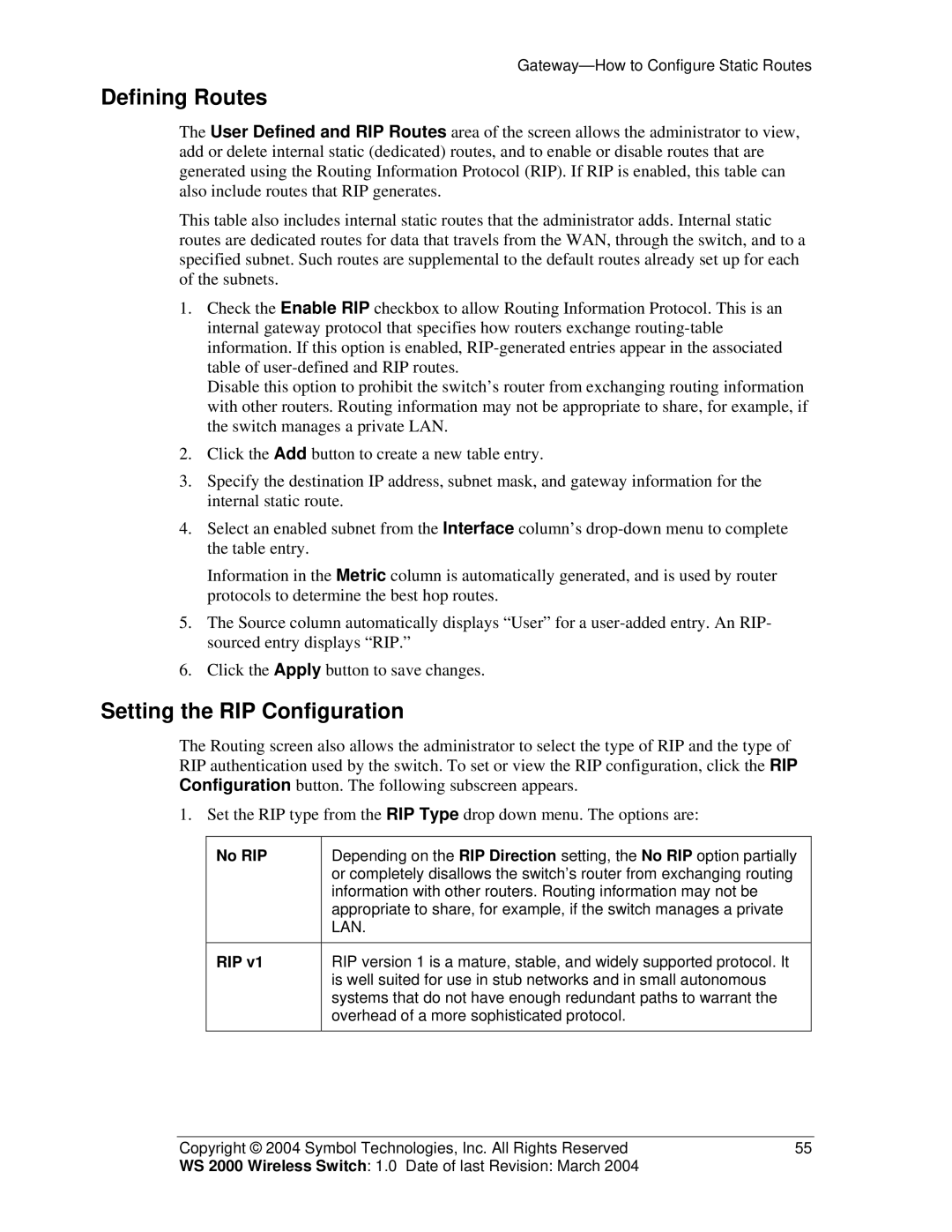Defining Routes
The User Defined and RIP Routes area of the screen allows the administrator to view, add or delete internal static (dedicated) routes, and to enable or disable routes that are generated using the Routing Information Protocol (RIP). If RIP is enabled, this table can also include routes that RIP generates.
This table also includes internal static routes that the administrator adds. Internal static routes are dedicated routes for data that travels from the WAN, through the switch, and to a specified subnet. Such routes are supplemental to the default routes already set up for each of the subnets.
1.Check the Enable RIP checkbox to allow Routing Information Protocol. This is an internal gateway protocol that specifies how routers exchange
Disable this option to prohibit the switch’s router from exchanging routing information with other routers. Routing information may not be appropriate to share, for example, if the switch manages a private LAN.
2.Click the Add button to create a new table entry.
3.Specify the destination IP address, subnet mask, and gateway information for the internal static route.
4.Select an enabled subnet from the Interface column’s
Information in the Metric column is automatically generated, and is used by router protocols to determine the best hop routes.
5.The Source column automatically displays “User” for a
6.Click the Apply button to save changes.
Setting the RIP Configuration
The Routing screen also allows the administrator to select the type of RIP and the type of RIP authentication used by the switch. To set or view the RIP configuration, click the RIP Configuration button. The following subscreen appears.
1. Set the RIP type from the RIP Type drop down menu. The options are:
No RIP | Depending on the RIP Direction setting, the No RIP option partially |
| or completely disallows the switch’s router from exchanging routing |
| information with other routers. Routing information may not be |
| appropriate to share, for example, if the switch manages a private |
| LAN. |
|
|
RIP v1 | RIP version 1 is a mature, stable, and widely supported protocol. It |
| is well suited for use in stub networks and in small autonomous |
| systems that do not have enough redundant paths to warrant the |
| overhead of a more sophisticated protocol. |
|
|
Copyright © 2004 Symbol Technologies, Inc. All Rights Reserved | 55 |
WS 2000 Wireless Switch: 1.0 Date of last Revision: March 2004 |
|
